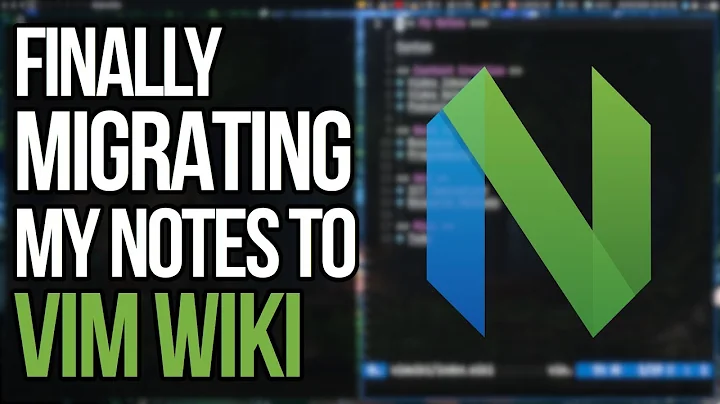Making Vim portable
Solution 1
There are portable versions of vim that seem to be maintained, but personally I've never found a particular need for them: the standard Vim is portable enough for my needs.
Create a directory on your USB stick (let's assume that it's E: when you're creating it):
E:\vim
Add two folders:
E:\vim\vim73
E:\vim\vimfiles
Copy the contents of C:\Program Files\vim\vim73 (or wherever it's installed) into E:\vim\vim73 and take your vim configuration files (if you have any) and put them in E:\vim\vimfiles. Copy your vimrc to E:\vim\_vimrc.
Now put the USB stick in another PC (let's assume it mounts it as F:). Open Windows Explorer, navigate to F:\vim\vim73 and double click on gvim.exe. It will open the Vim GUI and load your configuration.
To keep the local and portable vim configurations matching, I'd recommend sticking the vimfiles directory under version control (also allows you to easily try out new plugins and then 'revert' to get rid of them if you don't want them) and having a checkout on the USB stick and another one on the PC. If you move your _vimrc to vimfiles\vimrc and replace your _vimrc with the following, it will keep vimrc version controlled with all the plugins and configuration:
" _vimrc - Links to the vimrc in the vimfiles directory
runtime vimrc
You can do the same with _gvimrc if you have one.
Solution 2
Despite all the portable forks and complicated HOWTOs, making plain vim portable is pretty easy, actually I can't imagine it could get easier as you only need single line in config. At least on Windows, but I expect it to work elsewhere as well, let me know if I am wrong.
tl;dr
let $HOME=$VIM
$VIM variable is relative to the executable and points to parent directory (Z:\vim-portable in our case).
the unnecessarily long version
Let's mix in directory structure and pathogen.
-
Unpack the zips in
vim74dir:- vim74w32.zip (cmd version)
- gvim74.zip (GUI version)
- vim74rt.zip (runtime files)
-
Create your
_vimrcconfig file and insert:" Make vim portable. let $HOME=$VIM " Load and run pathogen. runtime bundle/vim-pathogen/autoload/pathogen.vim execute pathogen#infect() git clone pathogen into
vimfiles/bundledir. You could also justautoloadpathogen, but I like it this way.
And the tree looks like this:
Z:\vim-portable
| _vimrc
|
+---vim74
| | gvim.exe
| | vim.exe
| +---autoload
| +---colors
| +---compiler
| +---doc
| +---ftplugin
| +---indent
| +---keymap
| +---lang
| +---macros
| +---plugin
| +---print
| +---spell
| +---syntax
| +---tools
\---vimfiles
\---bundle
\---vim-pathogen
Solution 3
gVimPortable - Last updated 2019-12-18.
Related videos on Youtube
Devang
Updated on July 09, 2022Comments
-
Devang almost 2 years
I am learning to use Vim and I want to have a portable version on my USB to edit my code here everywhere. I knew there are a portable version of Vim, but while i was searching for that version I found here an interesting comment:
I wouldn’t reccomend using portable vim. It is unmaintained, and vim can be made portable by just adding a few options in your vimrc.
I got intrigued. I would be glad to have the desktop version of GVim in my USB, but those lines aren't mentioned. Someone knows which vimrc options he is talking about?
*PD: I'm not a native English speaker, so If there are some writing errors, don't hesitate to tell me please :)
-
user562374 over 13 yearsvim looks pretty portable to me. It does run numerous platforms already.
-
 Laurence Gonsalves over 13 years@user562374 The OP is using "portable" to mean something you can install on a removable volume (like a USB flash drive).
Laurence Gonsalves over 13 years@user562374 The OP is using "portable" to mean something you can install on a removable volume (like a USB flash drive).
-
-
 Craig Jackson about 3 yearsThis is perfect, and I was able to use this same approach for neovim (needed for better terminal support in Windows). I needed to run the same config in both Windows and WinPE, which have different paths for $HOME. Such a simple idea. The tree structure was also very helpful, the parent directory of the executable is an important piece that was not obvious until you explained that.
Craig Jackson about 3 yearsThis is perfect, and I was able to use this same approach for neovim (needed for better terminal support in Windows). I needed to run the same config in both Windows and WinPE, which have different paths for $HOME. Such a simple idea. The tree structure was also very helpful, the parent directory of the executable is an important piece that was not obvious until you explained that.












